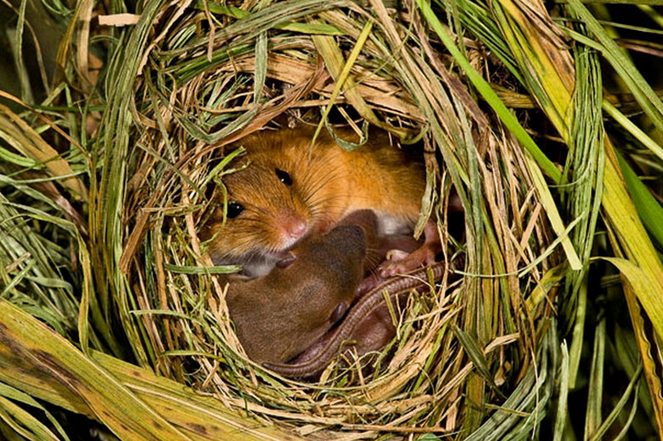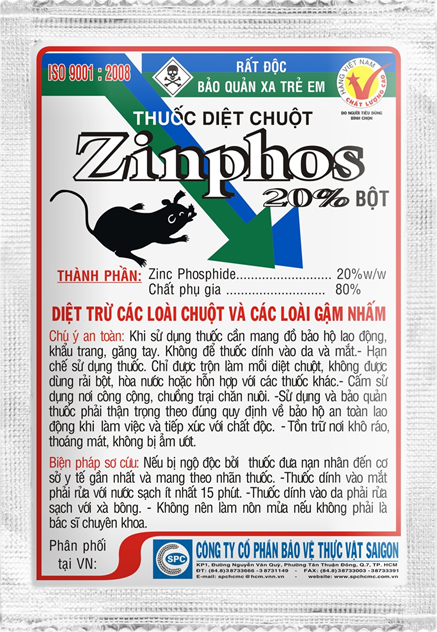|
Harmful rat on rice and prevention
29/01/2022
MSc Huynh Kim Ngoc Rice damaging rat is an important pest, the damage caused by rats is quite large. Up to now, only 13 species of rats have been detected in the Mekong River Delta region. In the field, rats damage at any stage of the rice plant, the heaviest in the period of booting to flowering , at this time they eat the young booting (sweet taste) or bite across the grain of rice. In many cases, rats bite more than they eat. In addition to biting and destroying rice, rats also dig holes on dikes, fields, and dams... causing water in the fields to be lost. In order to prevent rats from harming rice, it is necessary to learn carefully about the biological characteristics of rats, thereby giving the most effective control measures. Biological properties: Rats have poor eyesight, can not see far, can not distinguish colors, in return, rats have the ability to perceive smells and tastes of food very well. Rats are very good at hearing , very agile, climb, dig quickly, swim easily, and destroy mainly at night. Rats do not have fangs, but have strong and elongated incisors. Rats are suspicious, or suspicious of strange places, strange foods, often live in burrows, especially on the banks of rice fields. When the rice is ripe, the rats leave their burrows and live in the fields, sometimes littering in the rice plants. Rats do not like water, so any year there is a severe drought, that year there are many rats. Rats do not have the ability to go backwards, so in burrows, rats dig many nooks and crannies to move. When rats are immature, it is difficult to distinguish male and female rat by eye. In the field, when there is a lack of food, due to disease or overcrowding, rats will migrate to other places. The lifespan of rats is about 1 year, in which female rats live longer than male ones. Rats are omnivores, eating mainly green plants, in addition, rats also eat fish, snails, golden apple snails, crabs... The maturation of the rat is quite early. After giving birth, about 1-2 months later, the rats will mate again to give birth to a new litter. On average, a year rats give birth to 4-6 litters, each litter has an average of 5-12 individuals . Rats are mainly harmful at night. In the field, rats mainly cause damage in the booting to flowering. If damaged early, the rice can recover, creating new tillers , but when the rice ripens, it will be uneven, if damaged late, the rice cannot recover, not yield. Rats have many natural enemies such as snakes, pythons, birds that hunt rats , cats, dogs, diseases... but the most important natural enemy of rats is humans. Prevention -treament: The work of extermination should be done at the beginning of the crop, at the same time, continuously, evenly and with the participation of the community. *Prevention: - Determining the appropriate time, should be planted and harvested at the same time. - Do not plant too many crops in the field. - Good field hygiene - Protect the natural enemies of the mouse. * Treatment: - Trap crops: In each field, select a few fields, on which to plant early and grow fragrant rice to attract rats, the trap fields are surrounded by nylon fences, and inside the cages are placed to catch rats. Need to visit the field regularly to pick up rats, snakes... get into the cage and repair when necessary. - Use water to limit and kill rats: If possible, keep the water level high in the field during the booting -flowering period - to prevent rats from nesting along the border. - Hunting organization: By many methods such as burrowing, trapping, smoking, using hunting dogs or using agrimotor to chase and catch rats. The method of fumigating rats with acetylene, sulfur, burning straw mixed with dried chili, smoking sulfur is also quite effective, cheap, and does not cause pollution.. - Put bait : Each field is 1000 m2, put 15-20 troughs of bait, troughs are placed under the edge of the field, about 1 meter away from the border, every 10 meters we put a trough. The bait can be broken rice, copra, cassava, add a little vegetable oil, especially bait made from germinated rice and wax mixed with animal feed... To avoid the phenomenon of fear of bait , it is necessary to place the bait without medicine in a row 3 -5 days, then a few days, add Zinphos 20% rodenticide according to the recommended dose. You need to do it for a few days in a row, then collect all the poison baits and destroy it.
- Bắt chuột dùng làm thực phẩm: Đây là biện pháp trừ chuột rất hiệu quả, lại cải thiện thu nhập đáng kể. Thịt chuột rất ngon, có giá trị dinh dưỡng cao, là nguồn đạm bổ sung quí giá cho khu vực nông thôn có thu nhập thấp. Cần chú ý: Không nên dùng điện để giết chuột, việc diệt vài con chuột nhắc, phải trả giá bằng sinh mạng con người là giá quá đắt và cần phải nghiêm cấm. - Catching rats for food: This is a very effective way to get rid of rats and significantly improve income. Rat meat is delicious, has high nutritional value, and is a valuable source of additional protein for low-income rural areas. Note: Do not use electricity to kill rats, killing a few rats prompts, paying with human life is too expensive and should be banned. |
To prevent, in addition to plowing and burying weed seeds, collecting weed stalks and stumps left after tilling the land to burn, not letting weeds produce seeds in production fields, etc., the use of chemical products is still a measure. optimal because of its ability to thoroughly kill weeds, reduce labor and take advantage of more time than manual weeding.
Miner has the scientific name Phyllocnistis citrella Staint., family Phyllocnistidae, order Lepidoptera. The miner occurs in many countries in the tropics and subtropics. The main host of the miner is the citrus family - Rutaceae. In addition, the miner also attacks mangosteen and some other plants.
Adult is a small planthopper, with a body 2-3 mm long, the whole body is ash gray, slightly greenish, the wings are opaque with many small brown spots.Eggs are oval, 0.3 mm long, have a pointed end and are attached directly to the leaf surface, leaf axils.
Green bugs specialize in the fruit of citrus groups (oranges, tangerines, lemons, grapefruits, kumquats...), some people call them orange bugs, or orange suckers. Their scientific name is Rhynchocoris poseidon or Rhynchocoris humeralis.
In Vietnam, yellow leaf curl disease is very common on papaya trees, especially the disease is often severe in areas of high and continuous planting, areas with hot and arid climates. The disease has significantly reduced the yield and quality of papaya. Gardens that are infected early when the plants are young may not yield. However, up to now, many gardeners still do not know the cause and how to fix it.
Spider mites are common pests on citrus trees, especially in hot and dry climates that are suitable for spiders to grow and cause severe damage.The group of harmful spiders is usually very small in size, unlike the natural enemy spiders.
This group includes species that are generally very small in size, causing damage by sucking plant sap (on leaves, fruits, branches, stems).
There are many species of mealybugs present on the group of Oranges,Tangerines,Grapefruits and Lemons (Citrus), which can be divided into 2 groups:
+ Group of sticky mealybugs with common varieties such as Lepidosaphes, Aonidiella, Coccus and Saissetia.
+ Group of flower mealybugs with common genera and species such as Pseudococcus, Planococcus and Icerya purchasi.
Dry branches and berries disease often appear to be common damage on coffee gardens during the rainy season. The disease causes death of branchs, dry fruit, severely affects the canopy structure and coffee yield if not paid attention to prevention.
Pink disease commonly causes diseases on rubber plantations in the rainy season, especially on garden from 4-8 years old. This year, rubber has to go through a period of severe drought, weakening the tree, so now in tnshe rainy season it is easy to get infected. Therefore, it is necessary to pay attention to good management to avoid affecting the garden.
In recent years, the area of citrus has been expanded because it is a fruit tree with high economic efficiency. However, in order to sell at a high price, not only in quality but consumers also require the external beauty of the fruit, so pest management on citrus is a matter of great concern to farmers. The hot season is a favorable condition for thrips to develop and cause damage, affecting the commercial value of fruit.
- Headquarters
- SAIGON PLANT PROTECTION JOINT STOCK COMPANY
- RQ 1, Nguyen Van Quy St., Tan Thuan Ward, HCM City
- Tax code: 0300632232
- Tel: (028) 38 733 295 - 38 732 077
- Fax: (028) 38 733 003 - 38 733 391
- Website: www.spchcmc.vn - Email: info@spchcmc.vn
- SAIGON PLANT PROTECTION COMPANY
- SAIGON PLANT PROTECTION JOINT STOCK ENTERPRISE
- Lot C1-C3 Hiep Phuoc Industrial Park, Hiep Phuoc Commune, HCM City
- Tel: (028) 3873 4089 - Fax: (028) 3873 4086
- Affiliated Unit
-
- Quick Links
- Home
- About us
- Career Opportunities














